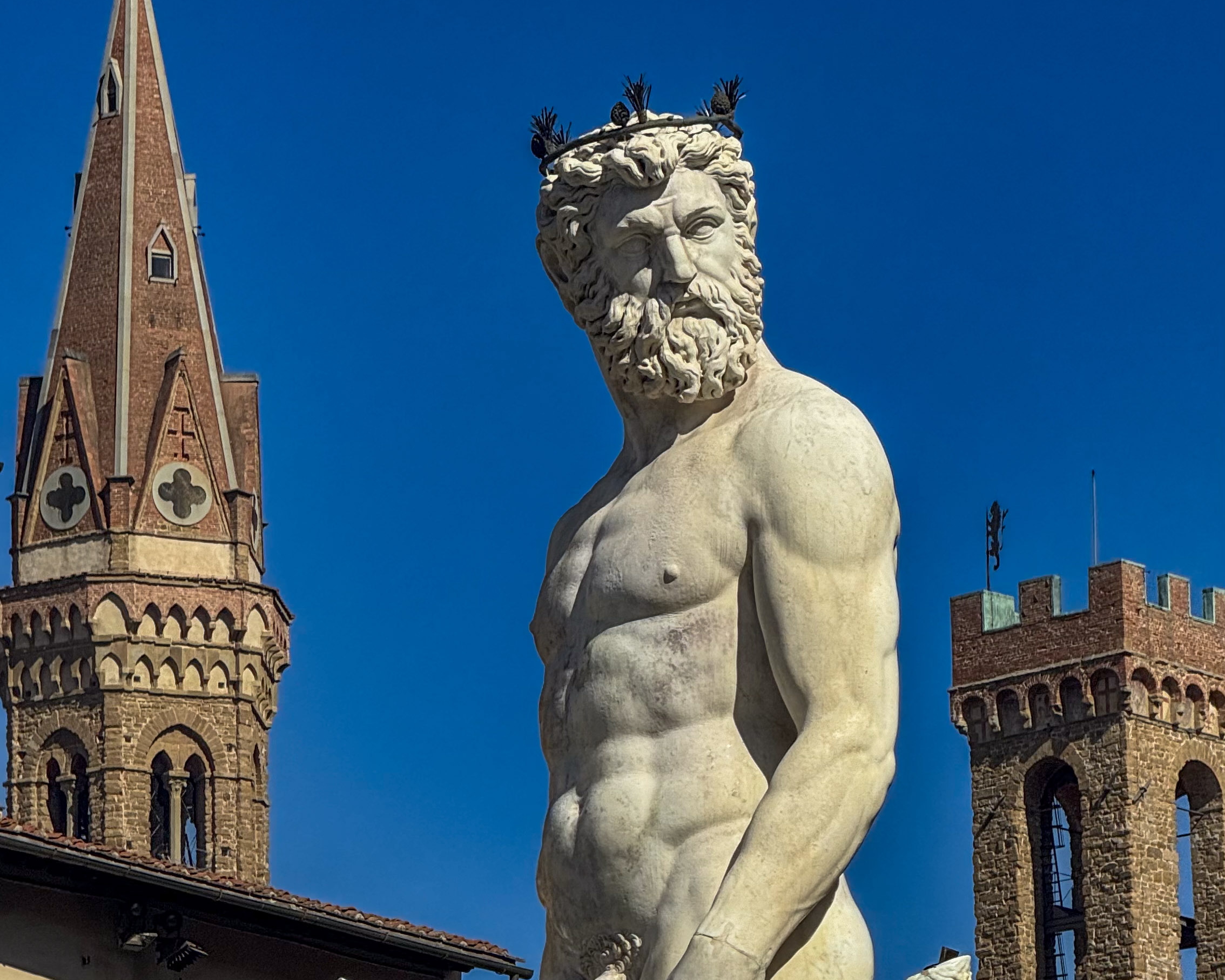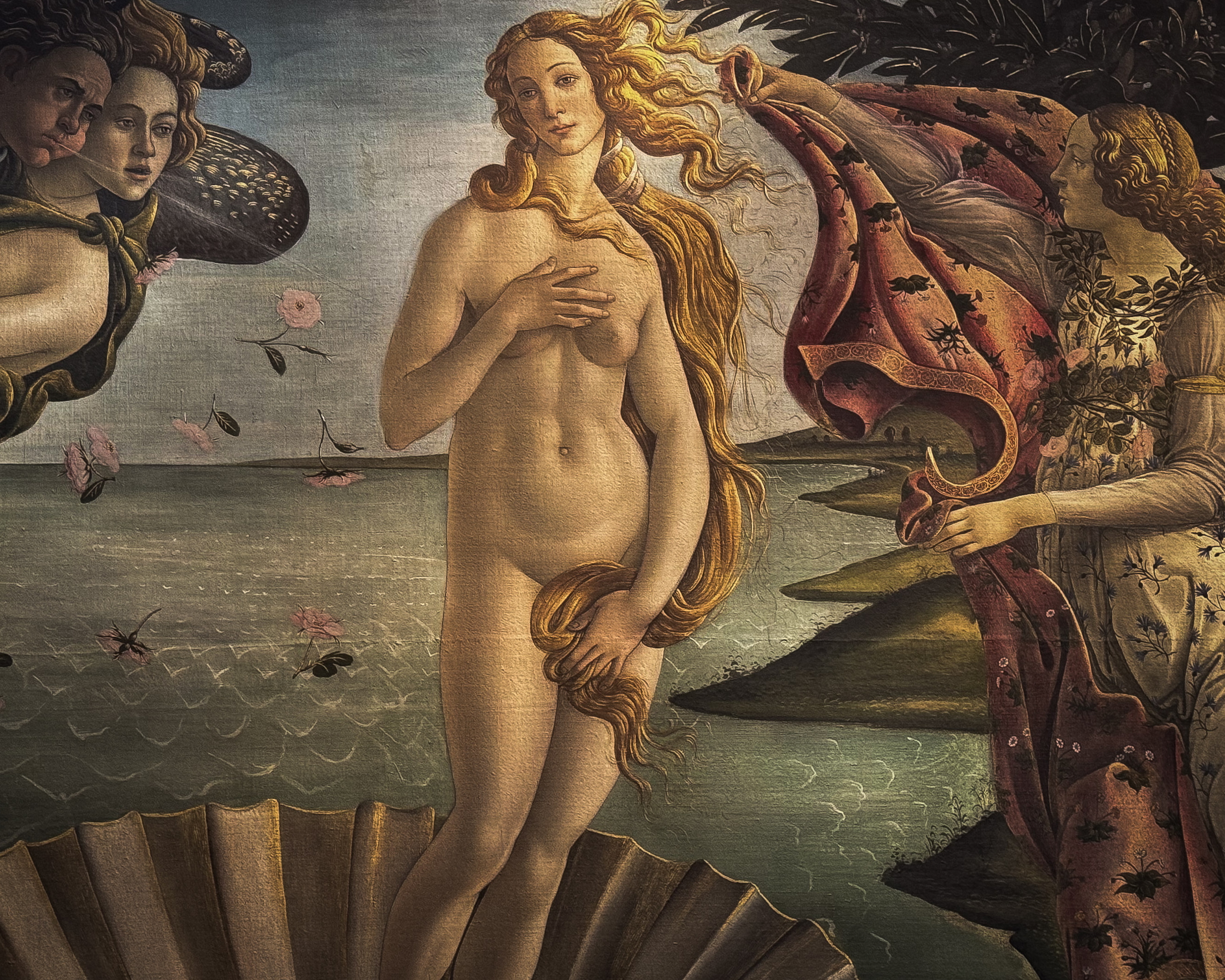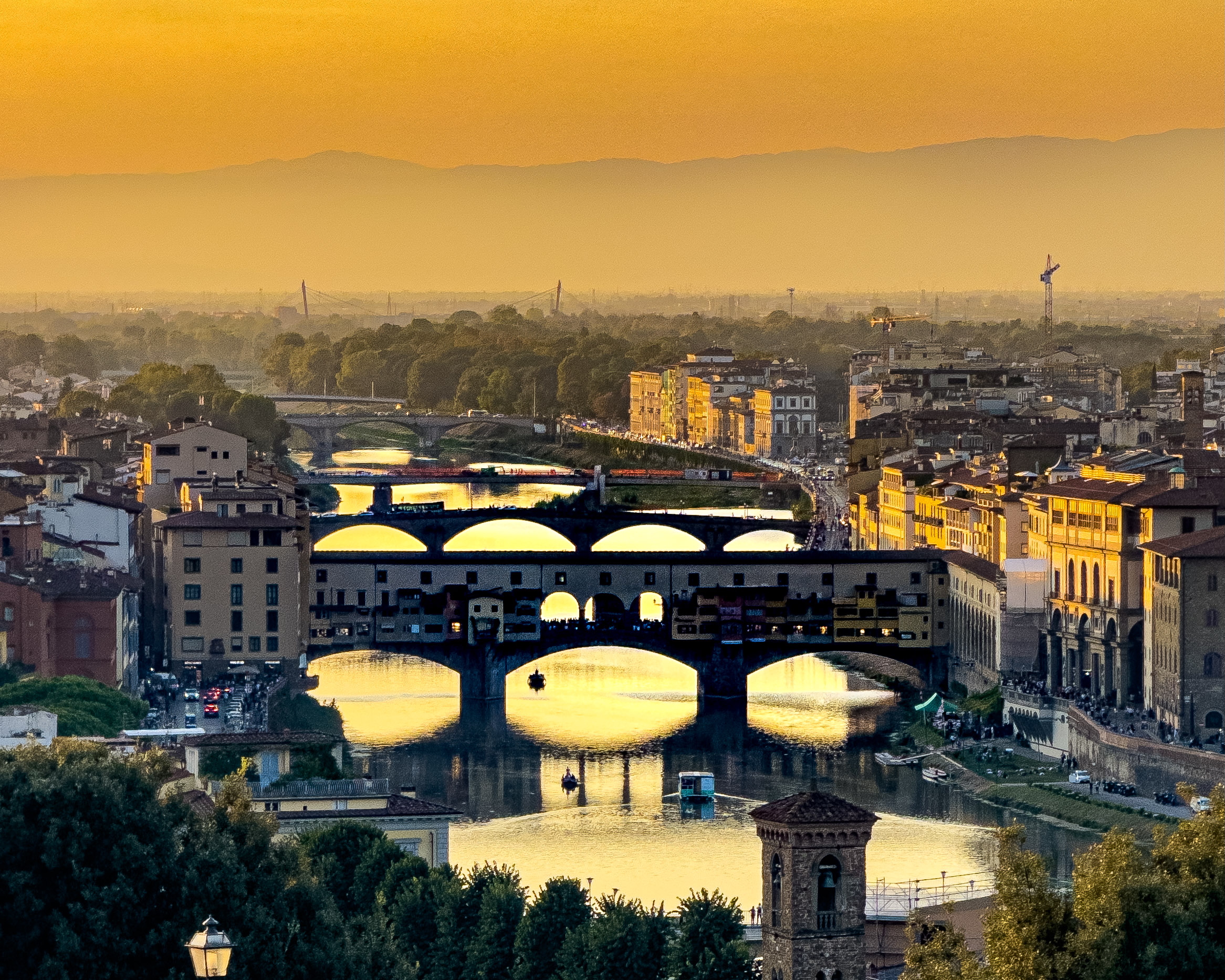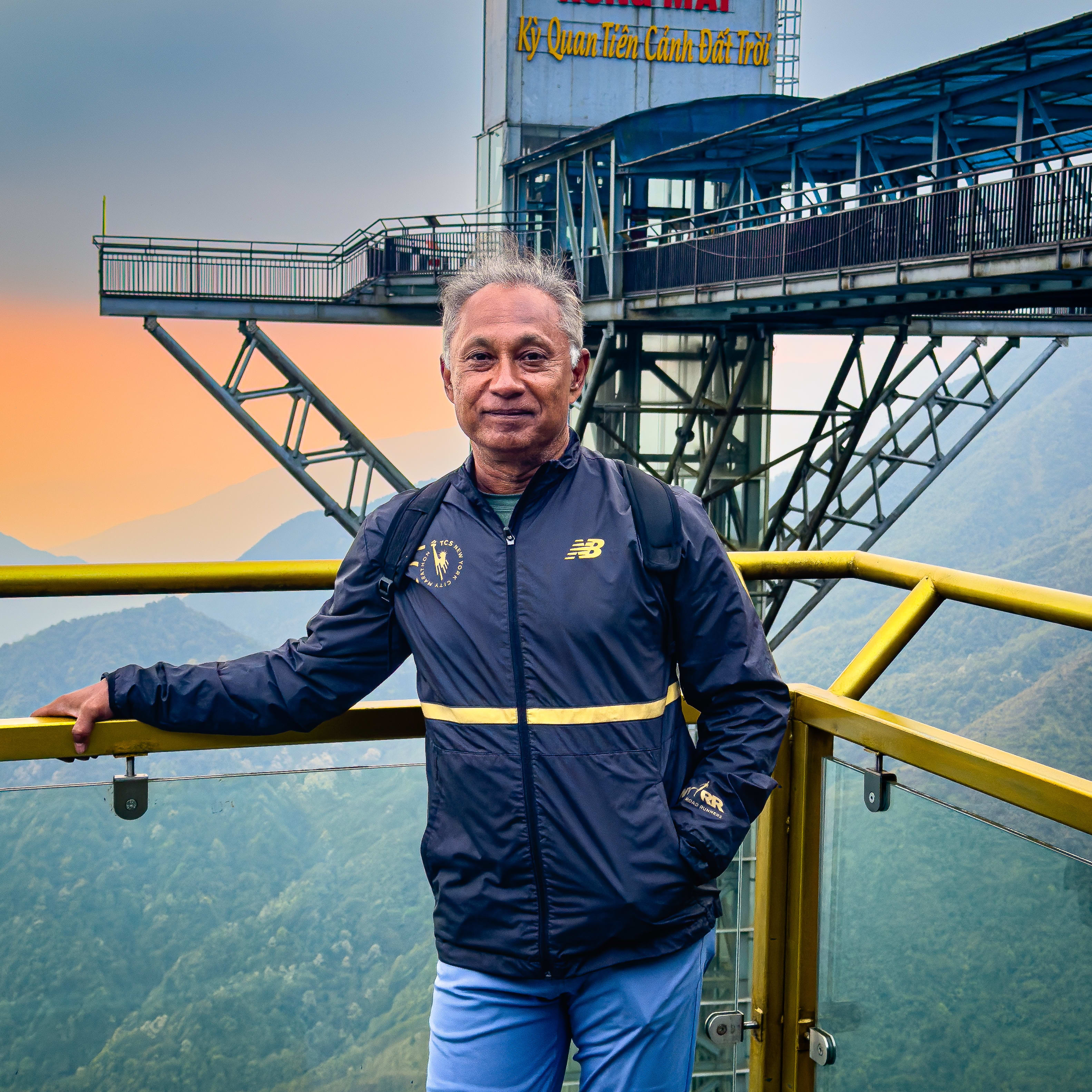
Curator’s statement
Florence isn’t just a city—it’s where the modern world began. As the birthplace of the Renaissance, it gave rise to the genius of Michelangelo, Leonardo da Vinci, Botticelli, and Dante. The city feels like a vast museum under open sky, where every piazza and palazzo whispers stories of ambition, art, and revolution. From the intricate marble of the Duomo to the golden glow of the Arno at sunset, Florence is a place to wander, wonder, and feel yourself part of something eternal. I created this guide based on my own journey—one where I walked with no agenda, lingered over espresso in quiet squares, and found beauty in both the masterpieces and the moments between them. Planning a longer trip? This guide focuses on Florence, but it pairs beautifully with my companion guide to the Tuscan countryside. Whether you start in the city and wander into the hills—or begin among vineyards and end with Renaissance masterpieces—both journeys are designed to flow together seamlessly. Be sure to check out the other for a complete Tuscan experience.
The Fora Difference
Book with Sundar to access exclusive perks and experiences on your trip.
Killer perks
Free upgrades, spa credits and more—we got you
Personalized recs
Customized travel planning for your style
Insider knowledge
Expert advice from people who’ve actually been there
Where to stay
Unlock perks by contacting Sundar to book your trip.
Day 1: First impressions of Florence – a walk through history

There’s no better way to begin your journey in Florence than to simply walk—no fixed agenda, just letting the city unfold at your feet. That’s exactly what I did on my first day, and it set the tone for everything that followed.
I started at the breathtaking Piazza del Duomo, and even though I had seen the images a thousand times, nothing prepared me for the Cathedral of Santa Maria del Fiore in person. The sheer size of the Duomo, topped with Brunelleschi’s revolutionary dome, is awe-inspiring. I took my time walking around the cathedral, admiring the marble façade in shades of green, pink, and white.
Before moving on, I stepped inside the cathedral—it’s surprisingly simple and serene compared to the outside—and spent a few quiet moments soaking in the space.
Just next to the cathedral is the Florence Baptistery, one of the oldest buildings in the city. The real showstopper? The Gates of Paradise—gleaming golden doors created by Lorenzo Ghiberti. Each panel is a work of art, telling stories from the Old Testament. Michelangelo wasn’t exaggerating when he said they were worthy of heaven itself.
Want a view? Pick your climb
Florence rewards those willing to take the stairs—and trust me, it’s worth it. These are three of the best spots to take in the city from above:
1. Giotto’s Bell Tower next to the Duomo | 414 steps
The view of Brunelleschi’s Dome is unbeatable, and the open-air landings offer breaks (and photos) as you climb.
2. Brunelleschi’s Dome atop the Duomo | 463 steps
A tighter, more immersive climb—you walk between the inner and outer domes, pass under Vasari’s frescoes, and emerge to one of the most iconic views in Italy.
3. Palazzo Vecchio – Arnolfo Tower Piazza della Signoria | 223 steps
Fewer crowds, equally impressive views—especially if you want the Duomo in your skyline photo. A quiet gem for those seeking something a little off the main trail.
Tip: Don’t try all three in one day. Choose the one that matches your energy—or spread them across your stay. I climbed all three, but I spread them out.
From the Duomo, I made my way down Via dei Calzaiuoli, the main pedestrian street connecting to Piazza della Signoria. On the way, I paused at Orsanmichele Church, once a grain market, now a charming Gothic structure with niches filled with statues by Donatello and others.
At Piazza della Signoria, history takes center stage. The Palazzo Vecchio, with its fortress-like façade, was once the seat of Florence’s government and Medici power. The square is alive with sculpture—Perseus with the Head of Medusa, Hercules and Cacus, and a replica of Michelangelo’s David. I could’ve spent hours just taking it all in.
From there, I wandered toward Ponte Vecchio, Florence’s oldest bridge. Today, it’s lined with glittering gold shops, but it holds layers of stories. Back in the 16th century, the Medici family commissioned architect Giorgio Vasari to build an elevated passageway—the Vasari Corridor—right above the bridge. It allowed them to walk from Palazzo Vecchio to their new residence at Palazzo Pitti, crossing the Arno without mixing with the commoners below. I found that little detail fascinating—a reminder of how power, privacy, and prestige shaped even the city’s architecture.
As I stood on the bridge watching the Arno shimmer in the late afternoon light, I imagined the Medici walking above me centuries ago, completely hidden from view. Florence isn’t just beautiful—it’s layered, full of secrets tucked behind stones and façades.
Later, I found a café near Piazza della Repubblica, ordered an espresso, and let the day sink in. My only goal was to feel Florence, not rush it. And by evening, I felt like I had already touched the soul of the city—through its streets, stories, and sky-high towers.
Did You know? The Vasari Corridor – A secret passage above the city
Running quietly above the bustling shops of Ponte Vecchio is the Vasari Corridor, a secret elevated passage built in 1565 by Giorgio Vasari for Cosimo I de’ Medici. It stretches nearly one kilometer, connecting Palazzo Vecchio (the seat of government) with Palazzo Pitti (the Medici residence across the river).
Why? So the powerful Medici could move freely—and safely—above crowds, avoiding mingling with the public or political enemies.
Today, parts of the corridor are occasionally open for guided tours, offering a surreal walk through centuries of Florentine history—complete with hidden views over the Arno and walls lined with Renaissance self-portraits.
Dante’s Death Mask – A face from the afterlife?
Hidden inside the Palazzo Vecchio, in the grand Salone dei Cinquecento, lies a haunting relic: a plaster mask said to have been cast from Dante’s face after his death. His sharp nose, sunken eyes, and gaunt cheeks seem frozen in thought—or maybe judgment.
But is it real?
Scholars still debate whether this was truly a death mask (made shortly after Dante’s death in 1321) or a Renaissance-era tribute, sculpted based on written descriptions and portraits. Regardless, standing before it gave me chills. It’s one thing to read Inferno, but quite another to stare into the face that imagined it.
Where to see it: Inside Palazzo Vecchio, Hall of the Five Hundred. Entry ticket required. Tip: Look for it tucked into a wall niche—easy to miss if you’re not paying attention.
Day 2: Botticelli’s muse and a sunset over Florence

After the whirlwind of first impressions yesterday, I slowed down today—but I also stepped straight into the heart of Renaissance genius at the Uffizi Gallery.
I started my morning early (strongly recommend booking an early slot), walking into the echoing halls of the Uffizi. It’s not just a museum—it’s the former office building of the Medici, and you can still feel the gravitas in the air. I moved slowly, spending time with the masterpieces I’d dreamed of seeing: Botticelli’s Birth of Venus and Primavera absolutely stunned me. I’d seen these in books, movies, even coffee mugs—but nothing compares to standing in front of them. The colors are softer than I expected, almost ethereal. Venus doesn’t just emerge from the sea—she pulls you into her world.
I also loved tracing the progression of styles as I moved room to room—the early religious altarpieces slowly giving way to human emotion, light, anatomy, and storytelling. The gallery itself is long and light-filled, with windows offering views over the Arno and the rooftops of Florence. Even the building is part of the art.
After about two hours (it’s intense—don’t rush), I stepped outside and let my mind wander. I grabbed a coffee and pastry at a nearby bar and just walked with no agenda. I let Florence guide me. I meandered through Piazza della Signoria again, then down to the river, where the Uffizi’s loggia spills into a view of the Ponte Vecchio.
In the afternoon, I crossed to the Oltrarno side again—quieter, more real. I browsed a few artisan workshops and found a tiny printmaker’s studio where the owner was carving woodblocks by hand. It reminded me that Florence isn’t just a museum—it’s still creating.
As the light softened in the late afternoon, I made my way (slowly—it’s a climb!) up to Piazzale Michelangelo. This spot is famous for its panoramic view of Florence—and it lives up to the hype. From up here, you can see it all: the Duomo, Palazzo Vecchio, the dome of San Lorenzo, and the curve of the Arno as it slices through the city. I arrived just before sunset, and the sky turned a warm gold, bathing the whole city in a glow that felt almost theatrical.
There’s a copy of Michelangelo’s David in the square—not the original, of course, but it still felt symbolic. Florence puts its soul on display, again and again, inviting you to see it from different angles.
I sat on the steps, surrounded by a mix of travelers, locals, students, musicians, and lovers, all quietly watching the day close. It felt like a sacred moment—not in a religious sense, but in the way beauty makes you still.
Traveler’s tip: Best way to reach Piazzale Michelangelo
If you’re up for a 15–20-minute uphill walk, start from San Niccolò and follow the signs. It’s steep, but scenic.
Not up for walking? You can also take Bus 12 or 13 from near the train station or city center.
Bring water, a small snack, and your camera—the view is that good.
Day 3: Meeting David, tasting Florence, and tracing the Medici

By Day 3, I felt a rhythm settling in. Florence had gone from overwhelming to intimate—and today was all about getting close to the icons, both artistic and culinary.
I started my morning at the Accademia Gallery. It’s smaller and easier to navigate than the Uffizi, which makes it feel more personal—and that’s exactly how it felt when I turned the corner and saw Michelangelo’s David.
It stopped me.
Everyone talks about the scale (he’s over 17 feet tall), the realism, the sheer perfection of the anatomy—and all of that is true. But what really struck me was his gaze. Calm. Focused. Almost defiant. He doesn’t just represent a biblical hero—he is Florence. Confident, proud, willing to take on giants.
Michelangelo’s “Prisoners” — Art as a struggle for the soul
As you walk through the Accademia Gallery toward David, you pass a series of unfinished sculptures by Michelangelo called the “Prisoners” or “Slaves.” These figures look as if they are trapped in stone—torsos, arms, and heads partially emerging from rough marble blocks.
Why are they unfinished?
Some say Michelangelo simply abandoned the works. But many art historians—and Michelangelo himself—saw something deeper. He believed that the figure already existed inside the marble, and that the sculptor’s job was not to “create” it, but to free it.
The “Prisoners” powerfully express this idea: the struggle of the human soul to break free from matter, from limitation, from chaos. They feel raw, almost alive—as if they’re still becoming.
In a way, these unfinished works are more emotional than polished perfection. They show the tension between form and formlessness, intention and resistance—and maybe even the artist’s own inner battles.
After leaving the Accademia, I headed straight for Mercato Centrale. If you want to taste Florence—literally—this is the place. The ground floor is a traditional market with fresh produce, meats, cheeses, and spices. Upstairs, it becomes a vibrant food hall. I grabbed a truffle panini and a glass of Chianti, and sat at a communal table watching locals on lunch break, chatting over bowls of pasta.
In the afternoon, I explored the San Lorenzo neighborhood—the former turf of the Medici family, Florence’s most powerful dynasty. I visited the Medici Chapels, including the ornate Chapel of the Princes with its semi-precious stone inlays and the more austere New Sacristy, designed by Michelangelo. This wasn’t just art—it was personal. You feel the Medici’s ambition, their power, their desire to be remembered.
A few blocks away is Palazzo Medici Riccardi, the family’s first palace—more understated, but still rich in frescoes and symbolism. I found it interesting how each building told a different chapter of the Medici’s rise—from shrewd bankers to de facto rulers of Florence.
By late afternoon, I had slowed things down. I wandered into Santa Maria Novella, a church I’d somehow missed on previous visits—serene and filled with masterpieces, but not crowded. A quiet retreat from the city’s bustle.
Dinner that night was spontaneous—a small trattoria tucked into a side street near San Lorenzo. No name-dropping, no reservations, just homemade pasta, crusty bread, and olive oil that tasted like sunshine.
Traveler’s tip: Mercato Centrale vs. San Lorenzo Street Market
The Mercato Centrale (inside) is best for fresh food, wine, and eating on the spot.
The San Lorenzo outdoor market (right outside) is all about leather goods, souvenirs, scarves, and Tuscan crafts. If you’re shopping for keepsakes, go early, and don’t be afraid to negotiate—it’s part of the experience.
Optional add-on: Boboli Gardens and Palazzo Pitti
If you’re feeling energetic or have extra time in the afternoon, cross the Ponte Vecchio and head into the Oltrarno district to explore the Boboli Gardens and Palazzo Pitti.
The Boboli Gardens offer a peaceful, leafy break from the busy city streets—think grand fountains, shaded lanes, Roman statues, and sweeping views over Florence and the hills beyond. It’s a great place to decompress after a museum-heavy day.
Right next to the gardens is Palazzo Pitti, once the Medici family’s residence after they outgrew Palazzo Vecchio. Inside you’ll find lavish royal apartments, the Palatine Gallery with works by Raphael and Titian, and even a fashion museum if that’s your thing.
These sites could also be easily visited on another day—especially if you decide to stay an extra day in Florence before heading into the Tuscan countryside.
Need to know
Florence travel tips
Book ahead for museums The Uffizi and Accademia sell out fast—book tickets online in advance and aim for early morning time slots to beat the crowds.
Wear comfortable shoes Florence is a city for walkers—and cobblestones don’t go easy on flimsy footwear. Bring supportive shoes for exploring.
Choose your climb Whether it’s Brunelleschi’s Dome, Giotto’s Bell Tower, or Palazzo Vecchio’s Arnolfo Tower—don’t try to climb it all in one day. Pick the one that suits your energy and the view you want.
Eat away from the tourist zones Wander a few blocks from the main piazzas to find authentic trattorias. Better food, better prices, more locals.
Catch golden hour at Piazzale Michelangelo One of the best views in Florence—arrive 30–45 minutes before sunset, bring a gelato or a drink, and enjoy the show.
Trace Dante’s footsteps Visit Casa di Dante, Santa Margherita church, and the Palazzo Vecchio for a literary thread woven through the city.
Shop Oltrarno for local crafts Head across the river for handmade leather goods, paper, and art—and a more local feel.
Don’t overplan Florence rewards wandering. Leave space in your schedule to linger in piazzas, step into unexpected churches, or sit with a coffee and people watch.

Travel Advisor
Sundar Rajan

Get in touch with Sundar
Did you like this guide? Reach out to customize and book your own experience. Or, just to chat about travel in general.
You can expect a response from Sundar within 1–2 business days. You’ll also be subscribed to our traveler newsletter (you can unsubscribe at any time).
For more inspiration and insider recommendations, visit our Florence page.